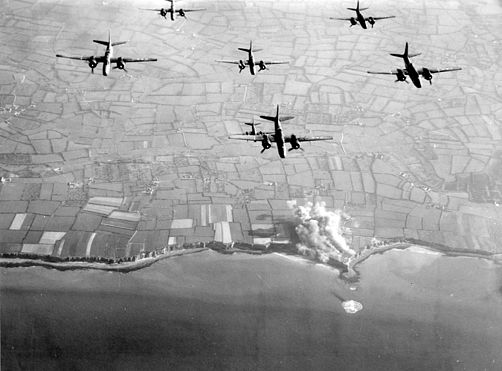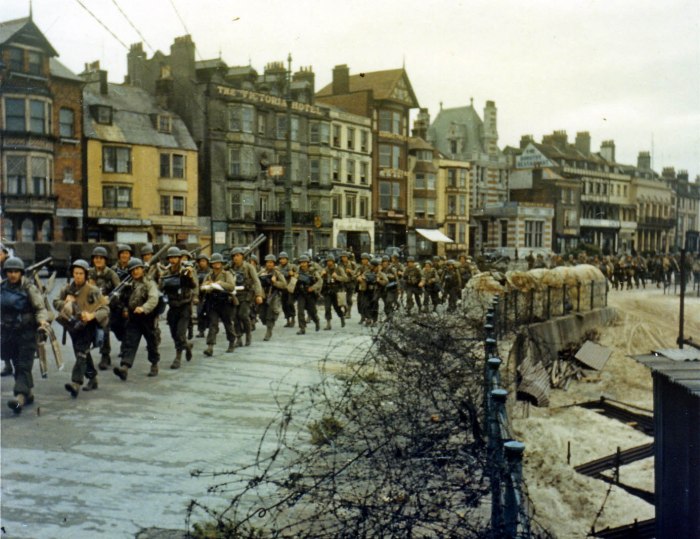 The Currahee Military Museum pays tribute to those who trained there during World War II. (Photo by George Morris)
The Currahee Military Museum pays tribute to those who trained there during World War II. (Photo by George Morris)
By George Morris
Toccoa, Georgia, is nearly as far off the beaten track today as it was when paratroopers trained at Camp Toccoa during World War II. Camp Toccoa is no more, but its spirit remains at the Currahee Military Museum and in the imposing presence of Currahee Mountain a few miles away.
The museum ($10 for adults; 160 N. Alexander St. in Toccoa) pays tribute to the soldiers who trained there — most famously Easy Company of the 101st Airborne’s 506th Parachute Infantry Regiment, whose exploits were depicted in Stephen Ambrose’s book, “Band of Brothers,” and the HBO series based on it. The 501st PIR, 511th PIR and 517th Regimental Combat Team also trained there.
This museum is nothing on the order of the National World War II Museum in New Orleans or the Museum of the Pacific War in Fredericksburg, Texas, but it has one interesting element that neither of those possess. And it didn’t even come from Camp Toccoa.
When the 506th PIR was shipped to England, some of its soldiers stayed in the town of Aldbourne. They were quartered in horse stables. Some years ago, when the owner of those stables was planning to tear them down, the Toccoa museum found out and bought six of them, which were taken apart and reconstructed inside the museum building. It depicts life the paratroopers experienced during that part of their training.
 Stables where the 506th Parachute Infantry Regiment were housed in Aldbourne, England, are part of the Currahee Military Museum display. (Photo by George Morris)
Stables where the 506th Parachute Infantry Regiment were housed in Aldbourne, England, are part of the Currahee Military Museum display. (Photo by George Morris)
The museum has a variety of memorabilia, both from the camp and war souvenirs brought home by the paratroopers. It includes a wedding dress made from parachute silk for Glenn Bartlett’s English bride, Joan.
About five miles out of town, Currahee Mountain still dominates the landscape. The U.S. Forest Service maintains a gravel road that the paratroopers ran as part of their training. You can drive to the top for the view. Or, if you want to feel what they felt, you can run it. Three miles up. Three miles down.
 The view from near the top of Currahee Mountain. (Photo by George Morris)
The view from near the top of Currahee Mountain. (Photo by George Morris)

 The Currahee Military Museum pays tribute to those who trained there during World War II. (Photo by George Morris)
The Currahee Military Museum pays tribute to those who trained there during World War II. (Photo by George Morris) Stables where the 506th Parachute Infantry Regiment were housed in Aldbourne, England, are part of the Currahee Military Museum display. (Photo by George Morris)
Stables where the 506th Parachute Infantry Regiment were housed in Aldbourne, England, are part of the Currahee Military Museum display. (Photo by George Morris) The view from near the top of Currahee Mountain. (Photo by George Morris)
The view from near the top of Currahee Mountain. (Photo by George Morris) This flag, on display in the National Museum of the Pacific War in Fredericksburg, Texas, was made by prisoners of war held by the Japanese and is similar to one made by POWs held in Davao, Philippines, and Toyama, Japan, during World War II. (Photo by George Morris)
This flag, on display in the National Museum of the Pacific War in Fredericksburg, Texas, was made by prisoners of war held by the Japanese and is similar to one made by POWs held in Davao, Philippines, and Toyama, Japan, during World War II. (Photo by George Morris) Gen. Dwight Eisenhower speaks with paratroopers shortly before they board airplanes taking them into Normandy on D-Day. (National Archives)
Gen. Dwight Eisenhower speaks with paratroopers shortly before they board airplanes taking them into Normandy on D-Day. (National Archives) Bombers attack Pointe du Hoc in advance of D-Day. (National Archives)
Bombers attack Pointe du Hoc in advance of D-Day. (National Archives) Soldiers come ashore on Utah Beach on D-Day (National Archives)
Soldiers come ashore on Utah Beach on D-Day (National Archives) A-20 Havoc bombers of US 416th Bomb Group attack road networks in Normandy on D-Day. (National Archives)
A-20 Havoc bombers of US 416th Bomb Group attack road networks in Normandy on D-Day. (National Archives)